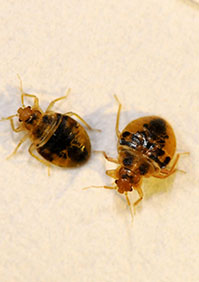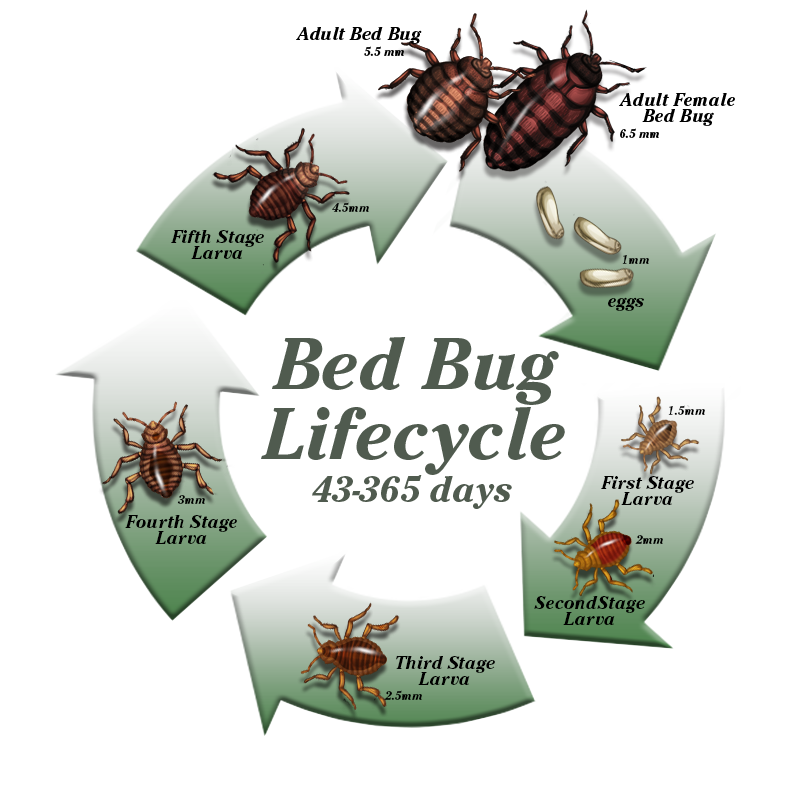How to Identify Bed Bug Bites and Prevent Future Infestations
How to Identify Bed Bug Bites and Prevent Future Infestations
Blog Article
Discover the Different Sorts Of Parasite and Their Treatment Alternatives for Effective Monitoring
The management of bugs in both farming and household settings requires a comprehensive understanding of the different types that can attack these settings, along with the therapy choices readily available for reliable control. From house rodents that position health risks to garden pests that intimidate plant returns, each group requires a customized method. Understanding the subtleties of bug behavior and the equivalent treatments is essential; nonetheless, the concern remains: what are one of the most reliable methods that not only deal with existing infestations but additionally stop future incidents?

Common House Pests
Although family parasites can vary substantially in kind and actions, many share typical features that make them a hassle. Common home bugs consist of rats such as mice and rats, bugs like roaches and ants, and periodic intruders such as crawlers and flies. These pests commonly grow in environments that offer simple accessibility to water, shelter, and food, making homes especially prone.
Rodents, for example, are well-known for triggering architectural damages and spreading out condition. They can munch via electric cords, possibly bring about fire hazards. Insects like cockroaches are not only disturbing but can likewise activate allergic reactions and bronchial asthma in delicate people. Ants, while usually safe, can attack cooking areas, providing food resources uninviting.
Effective parasite monitoring starts with avoidance, that includes securing access factors, maintaining sanitation, and utilizing suitable storage space techniques for food. Checking for indications of infestation is critical, as early detection can protect against much more significant concerns. When infestations take place, different control methods exist, varying from baits and catches to specialist elimination services. Understanding the routines and qualities of these usual home bugs is necessary for efficient administration and preserving a healthy living atmosphere.
Yard Pests and Their Effect
Yard pests position a substantial threat to the health and wellness and performance of plants, with some estimates suggesting that they can trigger approximately 40% of crop losses in specific areas. These pests, which consist of pests such as beetles, caterpillars, and aphids, in addition to nematodes, can inflict serious damages by preying on plant cells, resulting in stunted growth, reduced yields, and endangered high quality.
The effect of yard parasites prolongs past plain visual problems; they can interfere with communities by altering food chains, affecting pollinators, and spreading illness among plants. Pests like the crawler mite can damage plants, making them a lot more prone to fungal infections. Additionally, invasive species may outcompete indigenous vegetation, causing biodiversity loss.
Effective administration strategies are important to reduce these hazards. Integrated Insect Monitoring (IPM) techniques, which incorporate biological control, cultural methods, and targeted chemical applications, can supply lasting solutions. Routine surveillance and very early treatment are crucial in protecting against infestations. bed bug heat treatment. By understanding the specific parasites and their actions, gardeners can apply targeted therapies that not only protect their plants yet also advertise a much healthier yard environment.
Rats: Identification and Dangers
Rats prevail yard pests that can present substantial risks to plant health and wellness and total community security. These tiny mammals, including types such as rats, computer mice, and voles, are commonly recognized by their sharp incisor teeth and robust bodies. Their fur pigmentation differs widely, ranging from grey to brownish, and they typically display a long tail which help in equilibrium and dexterity.
The risks related to rodent invasions are complex. They can trigger considerable damage to plants and yards by gnawing on stems, roots, and fruits, which can lead to considerable financial loss for gardeners and farmers. Secondly, rodents are infamous for their role as vectors of various illness, consisting of hantavirus and leptospirosis, which can be transferred to human beings and animals. Their check these guys out droppings and pee official source can infect dirt and water resources, worsening health dangers.
Additionally, rats can interfere with the all-natural balance of local ecosystems by competing with indigenous wildlife for resources. Their delving routines can cause soil erosion and destabilization of plant origins. Consequently, very early identification and understanding of rodent actions and dangers are important for efficient insect management.
Effective Treatment Techniques
When handling rodent problems, using effective therapy approaches is important for decreasing damages and health dangers. Break catches and electronic catches give a humane and fast way to get rid of rats, while glue traps can assist monitor activity levels.
Second of all, lure terminals having rodenticides can be strategically positioned in locations of high rodent task. These terminals need to be tamper-resistant to make certain the safety of non-target animals and kids. It is critical to pick the proper bait type, as rats can create bait aversion if not transformed occasionally.
In enhancement to catches and bait, sealing access factors can substantially minimize the possibilities of re-infestation. This includes examining and repairing voids in wall surfaces, doors, and windows.
Last but not least, specialist parasite control solutions can be helpful for considerable invasions. They possess the expertise, devices, and items essential for reliable eradication and can create a customized management plan. By carrying out these therapy approaches, home owners can effectively address rodent concerns and shield their health and property.
Preventative Procedures and Tips

Keeping cleanliness is equally important; make sure that food is saved in impermeable containers and without delay tidy up spills or crumbs. Routinely taking care of waste and making certain that compost heap are taken care of effectively can hinder parasites from being brought in to your home.
Additionally, think about landscaping methods that dissuade rodent habitation. Trim greenery and maintain mulch far from the foundation of your residential property, as these can offer hiding places for bugs.
Final Thought
Effective parasite administration necessitates a thorough understanding of different insect kinds and their certain treatment alternatives. Customized methods for household bugs, garden pests, and occasional intruders are necessary for reducing threats and improving control actions. By integrating reliable treatment approaches with preventative strategies, such as routine inspections and preserving cleanliness, the probability of infestations can be dramatically decreased. Inevitably, a proactive stance on parasite management cultivates a healthier atmosphere, guarding both domestic and farming areas from pest-related obstacles.
Typical house pests include rodents such as mice and rats, bugs like roaches and ants, and periodic intruders such as crawlers and flies.Rats are usual garden insects that can present significant dangers to plant wellness and overall environment security. Early identification and understanding of rodent habits and dangers are important for effective parasite administration.
Reliable bug administration starts long prior to an invasion occurs, with positive measures that can dramatically minimize the likelihood of rodent entrance and habitation.Effective insect management necessitates a detailed understanding of different insect types and their particular therapy options.
Report this page